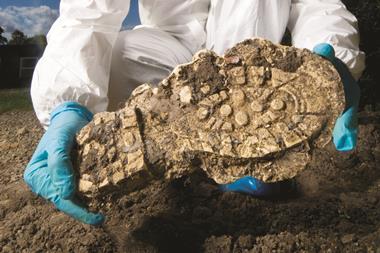How do you test for drugs when you don’t know what you’re looking for?
A team of British and Australian scientists has combined two spectroscopy techniques to rapidly identify new psychoactive substances from police drug seizures.

Designers of new psychoactive drugs, or ‘legal highs’, constantly tweak their chemical structure to avoid drug laws. And a lack of certified reference standards alongside the sample preparation required for established methods such as GC–MS and HPLC–MS has hindered high-throughput screening. So how do you test for drugs when you don’t know what you’re looking for? This is a problem currently facing forensic scientists.
The procedure developed by Steven Bell, from Queen’s University Belfast, and colleagues combines Raman spectroscopy and attenuated total reflectance infrared absorption, both non-destructive techniques, to identify new psychoactive substances. Linking the system with a spectral library that is constantly being updated with new compounds increases its success in identifying new compounds.
‘The approach determines if a seized sample is a known new psychoactive substance – and therefore whether it is an illegal substance – or a new variant, which we therefore need to add to our database and which will also need to be researched as to the physiological impact of ingestion. Adopting this process to live field analysis will also allow agencies to build a picture of what materials are currently in circulation and act as an early warning system to the relevant authorities,’ explains Bell.
‘The application of rapid and selective screen techniques, such as Raman spectroscopy, offer extremely simple and user-friendly tools for law enforcement agencies engaged in curtailing the spread of these substances,’ comments co-director of the Manchester Centre for the Study of Legal Highs, UK, Oliver Sutcliffe.
Even though the results from this study are only from one complete feedback cycle to the spectral library, it demonstrates the potential of the process. The team will now see if their method can continuously identify and update.
References
This article is free to access until 22 March 2016
L E Jones etal, Analyst, 2016, DOI: 10.1039/c5an02326b












No comments yet